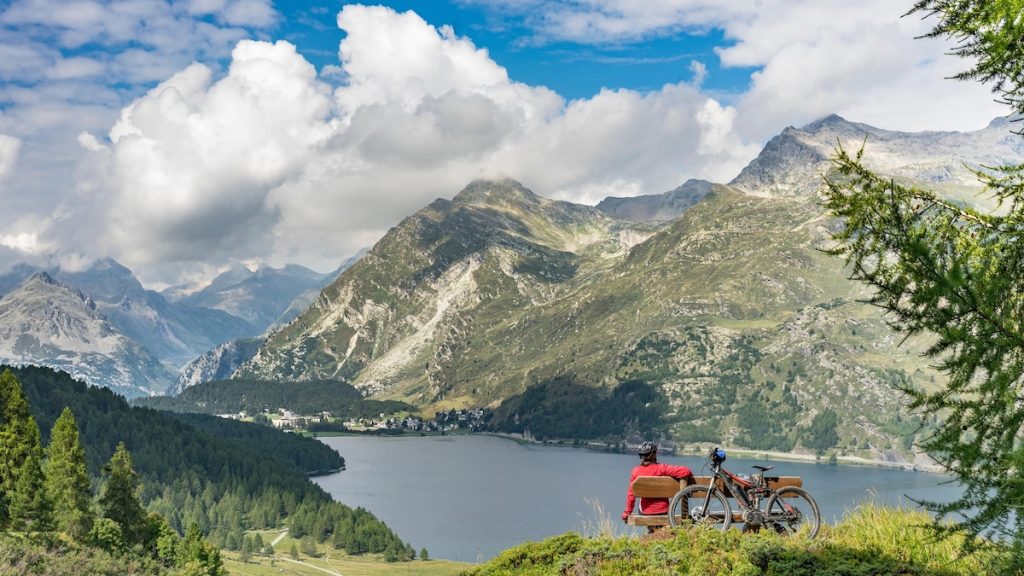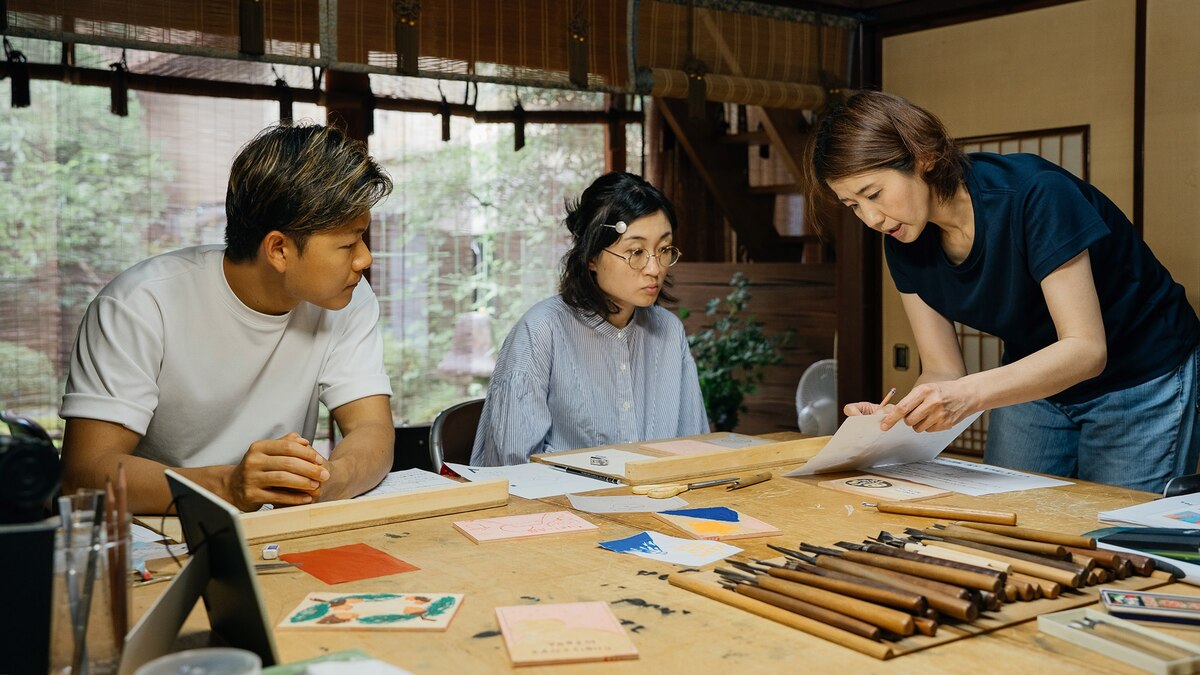Now Reading: Whatever happened to the samurai?
-
01
Whatever happened to the samurai?
Whatever happened to the samurai?

The samurai, Japan’s celebrated lineage of warriors, emerged in the Heian period (794-1185), when the rise of their status enabled them to mingle with the refined nobility living in the then-capital of Heian-kyō (Kyoto). Samurai fought in the Ōnin War and during the period of unrest that followed. From then on, the bushi, as the samurai were also called, made their mark on Japanese history with their exceptional fighting prowess, becoming emblematic of Japanese culture.
The high point of samurai history is often associated with the Tokugawa shogunate, also known as the Edo period (1603–1868), a time of peace, prosperity, isolationist policies, and cultural growth. This is the most studied era of Japanese history and the period in which novelists, filmmakers, and comic book creators tend to place their samurai characters. However, far from being the zenith of samurai culture, this period marked the beginning of the end of the samurai, or at least as the warrior caste they’d been during the previous centuries.
(This cunning Japanese shogun outlasted his rivals to found his dynasty)
Adapting to peace
Once the Tokugawa regime was established after the conquest of Ōsaka Castle in 1615, Japan enjoyed a period of peace, disturbed only by a few peasant revolts. The last major insurrection was the Shimabara Rebellion (1637–1638), which originated in a village on the island of Kyushu in the southwest of the archipelago. It was sparked by excessive taxation and the persecution of Japanese converts to Christianity. The leader of the uprising, Amakusa Shiro, perfectly exemplified the paradoxes of this new era. He was a Christian samurai capable of bringing together the warlike bearing of the bushi with the ideals of salvation, transmitted by the Jesuit evangelists who’d arrived in Japan in the 16th century. The uprising was brutally put down by government troops, with the help of cannons provided by Dutch merchants who’d settled in the archipelago.

Built in the 16th century, this fortress was the main stronghold of the Toyotomi clan, which maintained its resistance against the armies of Tokugawa Ieyasu. The capture of the castle in 1615 led to the unification of Japan under the Tokugawa shogunate
Alamy/Cordon Press
With the revolt crushed, Iemitsu, the third Tokugawa shogun, decided to slam shut the gates of the country to all foreign influence and impose a self-isolating, draconian policy of control, the Sakoku. Iemitsu’s measures guaranteed more than two centuries without war in Japan. The downside was that the samurai were rendered obsolete. Tens, even hundreds of thousands, of samurai whose forebears had been waging war for centuries, suddenly had to find new ways to survive outside the army.

An 18th-century guard from the hilt of a Japanese katana sword.
Album
Even in this new context, there were samurai who continued to demonstrate their swordsmanship in duels and exhibitions. The most famous of these was undoubtedly Miyamoto Musashi (1584–1645). Scholars are divided over whether or not he, as a teenager, participated in the Battle of Sekigahara in 1600, one of the last major conflicts before the Tokugawa shogunate. In any case, Miyamoto was left without a lord to serve and devoted himself to developing his own technique of combat with two swords: the wakizashi (short sword) and the katana (long sword). He showed off his skill in nearly 70 duels, all of them ending in victory for him and many with the death of his opponent. Before he died Miyamoto wrote a martial arts treatise that is well-known today: Gorin No Sho (The Book of Five Rings).
(These 3 samurai women were some of history’s most legendary warriors)
Swordsmen
In the mid-17th century, duels were banned and the use of swords was allowed only in self-defense. Faced with this restriction, the samurai resorted to provocations and insults so that their opponents would attack first. A samurai could then be justified in defending himself. Many samurai perfected the technique of iaijutsu, unsheathing their katanas at lightning speed before the opponent was able to land a blow. Iaijutsu derived from the martial art kenjutsu but soon became more popular. The samurai created a large number of dojos (martial arts schools) in which an aesthetic style of combat developed.


These 19th-century illustrations show rōnin (masterless, wandering samurai) armed with a spear, or yari, and a daisho (pair of short and long swords).
Scala, Florence (Bottom) (Right)
The dramatic change in the status of the samurai was reflected in the emergence of the rōnin; this was the name given to samurai who were left without a master. The Japanese word rōnin means “men of the waves” and evokes an aimless wandering and a sense of being untethered, like floating leaves on the water. A romantic idea of the Japanese warrior par excellence soon grew around the figure of the rōnin; they were seen as mavericks who could perform all kinds of feats. This ideal was best embodied in the figure of Miyamoto Musashi. However, Miyamoto was an exception. In reality most rōnin tended to be sword-wielding vagabonds, their need to survive forcing them to accept unglamorous jobs such as bodyguards, enforcers, or simply laborers.

A daimyo (feudal lord or land-holding master) accompanied by his warriors is about to set off for Edo (modern-day Tokyo) in a norimono (palanquin). The photograph was taken around 1867, just before the Meiji Restoration, which would end the feudal Tokugawa shogunate and force a westernization of Japanese society.
Musée Guimet/RMN-Grand Palais
Edo thrives
Meanwhile, in the city of Edo (today’s Tokyo) everything seemed to be flourishing. Businesses and services grew year over year, creating a rich and populous city that impressed the few foreign visitors who came to Japan. Among these was the German physician and naturalist Engelbert Kaempfer, who claimed in the late 17th century that Edo was “the center of the world.” The city’s prosperity was largely because of a law that required feudal lords to live in Edo for six months of the year, maintaining their entire court of samurai and other servants there.
(The real history of Yasuke, Japan’s first Black samurai)

The mood of Edo at night is captured in this 19th-century painting.
Bridgeman/ACI
Many rōnin also flocked to Edo. Some of them founded organized gangs that operated on the margins, practicing extortion and running prostitution rings. Over decades, these groups adopted increasingly complex codes and hierarchies, based on a distorted vision of Bushido, the samurai code. This gave rise to what would later become known as the yakuza, the Japanese mafia, made up of families comparable to samurai clans. The weapons, tattoos, and clothing of its members made the yakuza immediately recognizable and instilled fear among the common people. This was analogous to the way the bushi had identified themselves by carrying the daisho (traditional pair of swords comprising a long-bladed katana and short-bladed wakizashi) and displaying their family crest (kamon). Yakuza members would amputate sections of their own fingers (in an imitation of hara-kiri, suicide by disembowelment) as an honorable punishment if they ever made a mistake.

A yakuza, the term for gangster, is depicted in this 19th-century illustration with his body covered in tattoos.
Album
Precarious economic situation
The samurai who did manage to remain in the service of a daimyo, or feudal lord, had to accompany him during the annual season he was obliged to spend in the capital. There, they received a minimal stipend in exchange for sporadic administrative or surveillance work on the master’s estate. Since the code of their class prohibited them from making investments or engaging in any commercial activity, the economic situation of these samurai was often precarious. It wasn’t uncommon for them to spend the day drinking in taverns and hiring prostitutes in Yoshiwara, Edo’s pleasure district. They often ended up in debt to members of the city’s emerging merchant bourgeoisie. Many samurai of ancient lineage even sold their katanas to pay for the mizuage (deflowering) of a maiko (apprentice geisha), a ceremony that was in fashion at the time. But not all samurai fell into this kind of debauchery.

A samurai (far right) walks through the pleasure quarter of Edo with a maiko (apprentice geisha) on his arm, in this 19th-century woodcut by Hishikawa Moronobu.
Album
There were also those who became notable personalities in the world of the arts. A case in point is that of Matsuo Bashō (1644-1694), one of the greatest haiku poets in Japanese history. He was the son of Matsuo Yozaemon, who had belonged to an old samurai family. As a young man Bashō began to serve the firstborn of the Todo clan, but his literary talent enabled him to distance himself from the military field. In the realm of painting, Watanabe Kazan (1793-1841), whose family was loyal to the daimyo Tahara, combined the traditional Japanese painting style ukiyo-e with European-style realism and shading (namban). Almost equally subversive in technique was the artist Kawanabe Kyōsai (1831-1889), considered one of the fathers of manga.
Officials and bureaucrats
Some samurai rose to positions of power in the courts of the Tokugawa shoguns—not as warriors, but as ministers and bureaucrats. This was the case of Kira Yoshinaka (1641-1703), who became a kōke, a master of ceremonies managing high-level events. Daimyo Asano Naganori assaulted Kira during a disagreement and was then forced to die by seppuku, also known as hara-kiri, as punishment. This led to the infamous vendetta waged by the 47 samurai. After Asano’s suicide, the samurai who’d been in his service converted into rōnin, then waited more than a year for the best moment to assassinate Kira and avenge their master. They were then condemned to commit hara-kiri.
You May Also Like
Paradoxical as it may seem, the triumph of the most important samurai in the history of Japan, shogun Tokugawa Ieyasu, marked the beginning of the decline of his own caste. The bushi code lost much of the meaning it had in earlier times, while an idealized image of the samurai emerged describing a phenomenon that had never existed. In the 19th century, as Japan felt its integrity threatened by the English, Russians, and Americans, there was an attempt to shake off the old-fashioned, purist ideology of the warrior and instead mix it with one of nationalism in the service of the emperor. Today something of the samurai essence remains in Japan, whether in the militaristic tradition, in the activity of the yakuza, or in deeply rooted values such as discipline and artistic sensibility.
I resolved to see the moon over the mountains of Kashima Shrine this autumn. I was accompanied by two men, a masterless samurai and an itinerant monk. The monk was dressed in robes as black as a crow… Off he strutted, thumping his staff, alone in the universe… I, however, am neither a monk nor a man of the world; I could be called a bat—in between a bird and mouse!
— Matsuo Bashō, Kashima Journal
Nostalgia for the old ways of the samurai

An 1864 portrait of a samurai by Felice Beato
RMN-Grand Palais
The Hagakure is an 18th- century compilation of the reflections of Yamamoto Tsunetomo, a high-ranking samurai official. The collection, later translated into English, is a kind of handbook and ethical code of the samurai at a time when its warrior values were no longer seen as relevant. Having pursued a career as a scholar, a warrior, and a librarian, Yamamoto became a Buddhist priest and retired to the woods where he noted the thoughts that were later compiled into his masterpiece. Evocative of his woodland surroundings, Hagakure is translated either as “in the shade of the leaves” or “fallen leaves.” It recalls with nostalgia a time when samurai were true warriors willing to die at any moment. He writes extensively on how to approach death, show obedience to one’s master, and be serene in adversity. A few examples of the many aphorisms are included in the following translation of Hagakure by William Scott Wilson. The original work also criticizes young samurai for abandoning the old ways. The emphasis on devotion and bravery follow the ideals of the old bushi—a far cry from modern samurai, whose role lacked the same need for discipline.

A 19th century woodcut of a samurai
DEA/Album
This story appeared in the May/June 2025 issue of National Geographic History magazine.



























